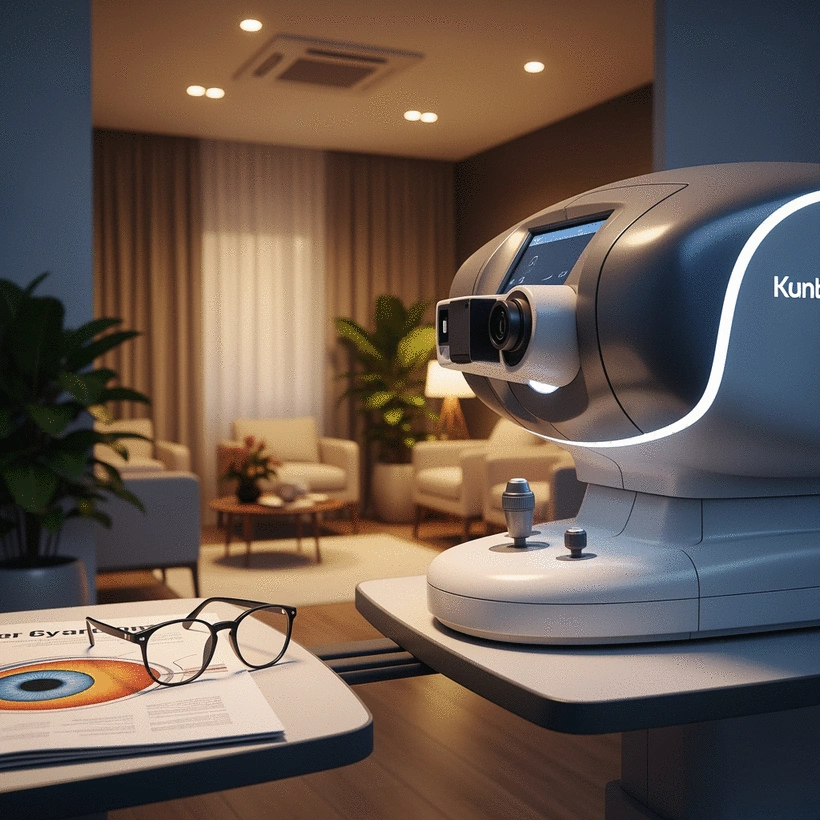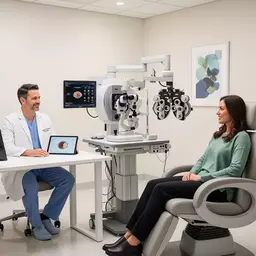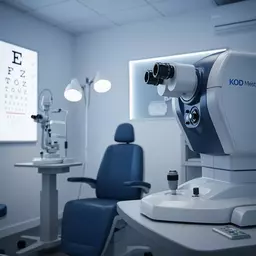Factors Affecting Laser Eye Surgery Costs

Many individuals considering LASIK eye surgery often find themselves grappling with the complexities of costs and what they truly encompass. As you embark on this journey, understanding the various factors influencing pricing will empower you to make informed decisions for your vision correction.
What You Will Learn
- The type of technology used in LASIK can significantly affect pricing, with advanced options like Wavefront-guided LASIK often costing more due to their precision.
- Surgeon expertise plays a crucial role in costs; investing in a skilled surgeon can enhance outcomes and reduce complications.
- Geographic location impacts LASIK costs—urban areas may charge more due to higher demand and operational expenses compared to rural clinics.
- Hidden costs such as pre-operative tests, follow-up care, and necessary medications should be budgeted to avoid unexpected expenses.
- Understanding the average costs of various LASIK procedures allows you to evaluate your options effectively, with prices typically ranging from $2,000 to $4,500 per eye.
- Insurance coverage for LASIK can be limited; reviewing your policy is vital to understanding what costs may be covered.
- Financing options are available at many clinics, making LASIK more accessible by allowing patients to pay over time.
LASIK Cost Factors & Average Pricing
Understanding the elements that influence LASIK pricing, along with typical costs, helps in making informed decisions for vision correction. For a detailed breakdown of these factors, explore our article on factors affecting laser eye surgery cost.
Key Cost Influencers
Technology Type
Wavefront, SMILE, Traditional
Surgeon Expertise
Experience & success rates
Geographic Location
Urban vs. Rural pricing
Hidden Costs
Pre-op, aftercare, meds
Average Cost Per Eye (AUD)
- Traditional LASIK$2,000 - $2,500
- Wavefront-guided LASIK$2,500 - $3,500
- SMILE Procedure$3,000 - $4,500
- PRK Procedure$1,500 - $2,500
- Prescription Eye Drops$50 - $150
Costs can vary based on individual factors and clinic.
Understanding LASIK Costs: A Comprehensive Overview
When it comes to LASIK eye surgery, understanding the costs involved is essential for making informed decisions. Many people wonder, "What factors influence the price of laser eye surgery?" By breaking down these elements, I aim to give you a clearer picture of what to expect.
At VisionCost Insights, we are dedicated to demystifying the financial aspects of your vision correction journey. Let's explore the factors that can significantly impact the pricing of LASIK surgery.

What Factors Influence Laser Eye Surgery Pricing?
Technology Type: Examining the Cost Differences
The type of technology used during the LASIK procedure can greatly affect the overall cost. Advanced techniques, such as Wavefront-guided LASIK, often come at a higher price due to their precision and enhanced outcomes. Understanding the differences between technology types can help you choose the best option for your needs.
- Traditional LASIK: Generally the most cost-effective option, but may have limitations in precision.
- Wavefront-guided LASIK: Offers customized treatment, leading to improved patient satisfaction.
- SMILE: A newer technique that typically costs more due to its innovative approach.
By considering these options, you can align your choice with your budget while ensuring you receive the best care possible.
Surgeon Skill and Experience: Why It Matters
Another critical factor is the surgeon's skill and experience. Highly experienced surgeons often charge higher fees, reflecting their expertise and successful track records. While this may seem like an added expense, investing in a skilled surgeon can lead to better results and lower complication rates in the long run.
When deciding, ask potential surgeons about their qualifications and success rates. This can help you assess whether their experience justifies their pricing.
Geographic Location: How Area Affects Pricing
Your location can also play a role in determining the cost of LASIK surgery. Urban areas may have higher prices due to increased demand and operational costs, while smaller towns may offer more competitive rates. Always consider your local options and compare prices to find the best fit for your budget. For more insights on this, you might find our article on finding trusted laser eye clinics helpful.
- Cities may have a higher cost of living, affecting surgical fees.
- Rural clinics might provide lower rates and personalized care.
- Researching multiple geographic options can yield significant savings.
Breaking Down Average LASIK Costs: What to Expect
As you navigate the world of LASIK, understanding the average costs can help you prepare financially. So, what can you expect to pay?
Typically, the average price per eye for LASIK surgery in Australia ranges between $2,000 to $3,500. However, these figures can vary based on the factors we discussed.
Cost Analysis: Average Price Per Eye for Different Procedures
- Traditional LASIK: $2,000 - $2,500 per eye.
- Wavefront-guided LASIK: $2,500 - $3,500 per eye.
- SMILE: $3,000 - $4,500 per eye.
Understanding these averages provides a solid foundation for evaluating your options.
Hidden Costs: Additional Fees Beyond the Surgery
It's crucial to be aware of any hidden costs that may arise during your LASIK journey. These can include necessary pre-operative tests, follow-up care, and additional enhancements.
Pre-Operative Tests and Follow-Up Care
- Comprehensive eye exams prior to surgery: costs vary based on the clinic.
- Follow-up visits for monitoring recovery: often included but can sometimes have extra fees.
Medications and Enhancements: Understanding Out-of-Pocket Expenses
Don’t forget to budget for medications and possible enhancements needed post-surgery. For instance, you might need prescription eye drops during recovery, adding to your overall cost.
- Prescription eye drops: typically cost between $50 - $150.
- Enhancements: may be necessary if vision isn't perfect after the initial procedure.
Being fully prepared for these expenses ensures that there are no surprises along the way!
Comparing LASIK Technologies: Cost vs. Benefits
Now that we've covered the basics, let's dive into the different LASIK technologies. Each type has its own cost implications and benefits.
Wavefront-Guided LASIK: Cost Implications and Advantages
This advanced technology provides a customized treatment plan tailored to your unique eye characteristics. While it may cost more, many patients experience better visual outcomes, making it a worthwhile investment.
SMILE Procedure: Cost Factors Compared to Traditional LASIK
The SMILE procedure is a less invasive technique that can reduce recovery time. Although it may come with higher initial costs, many patients find its benefits justify the expense.
Femtosecond Lasers: Pricing Differences and Patient Outcomes
Femtosecond lasers are often used for creating corneal flaps in LASIK. This state-of-the-art technology can enhance safety and precision, but it does increase overall cost.
Exploring Other Refractive Surgery Options: PRK vs. LASIK
While LASIK is popular, other refractive surgery options like PRK exist. As you explore these alternatives, understanding their costs and benefits is essential.
Comparative Costs of PRK and LASIK: Key Differences
- PRK: Typically ranges from $1,500 to $2,500 per eye.
- LASIK: Generally costs more due to its advanced technology.
Recovery Time and Patient Satisfaction: What to Expect
Recovery times can vary between PRK and LASIK, with LASIK patients often experiencing quicker healing. However, individual satisfaction levels may depend on personal preferences and circumstances.
Understanding Insurance and Financing Options for Laser Eye Surgery
Many patients are surprised to learn that insurance coverage for LASIK can be limited. It’s essential to review your policy before proceeding.
Insurance Coverage: What to Know Before You Decide
Some insurance plans may cover a portion of your LASIK surgery costs. It's always wise to contact your insurance provider for specific details regarding your coverage.
Financing Plans: Making LASIK Affordable for Everyone
Many clinics offer financing options, allowing you to pay for your surgery over time. This can make the procedure more accessible, easing your financial burden.
Payment Plans and Discounts: Exploring Your Options
- Monthly payment plans: often available through clinics.
- Discounts for upfront payments: worth inquiring about!
Patient Experiences: The Value Beyond Cost Considerations
While cost is a significant factor, understanding patient experiences can provide valuable insights into LASIK. Many report increased satisfaction and improved quality of life post-surgery.

Real Patient Testimonials: Satisfaction vs. Cost
Hearing from those who have gone through the LASIK process can help inform your decision. Many patients share that the benefits far outweigh the costs.
Expert Opinions: Insights from Leading Surgeons and Clinics
Consulting with experienced surgeons can provide clarity on what to expect during the procedure and recovery. Expert opinions can guide you toward the best options for your vision needs.
Risk Assessment: Understanding Potential Complications
Every medical procedure comes with risks, and LASIK is no different. Assessing potential complications can help you make a balanced decision about whether it’s right for you.
Interactive Poll: Your Thoughts on LASIK
As you explore the various factors influencing LASIK costs, we'd love to hear your opinion! What do you consider the most important aspect when deciding on LASIK surgery?
Frequently Asked Questions About LASIK Costs
What factors primarily influence the cost of LASIK eye surgery?
The primary factors influencing LASIK costs include the type of technology used (e.g., traditional, Wavefront-guided, SMILE), the surgeon's skill and experience, and the geographic location of the clinic. More advanced technologies and highly experienced surgeons generally lead to higher costs.
What are the average costs for different types of LASIK procedures?
On average, Traditional LASIK ranges from $2,000 - $2,500 per eye, Wavefront-guided LASIK is $2,500 - $3,500 per eye, and the SMILE procedure costs $3,000 - $4,500 per eye. PRK procedures typically range from $1,500 - $2,500 per eye.
Are there any hidden costs associated with LASIK surgery?
Yes, hidden costs can include necessary pre-operative tests, follow-up care, prescription eye drops (typically $50 - $150), and potential enhancements if vision isn't perfect after the initial procedure. Always inquire about a comprehensive cost breakdown from your clinic.
Does insurance cover LASIK eye surgery?
Insurance coverage for LASIK is often limited, as it is frequently considered an elective procedure. Some plans may cover a portion, so it's essential to contact your specific insurance provider for details regarding your policy.
What financing options are available for LASIK?
Many clinics offer financing plans, allowing patients to pay for their surgery over time through monthly installments. Discounts for upfront payments may also be available. These options can help make LASIK more accessible and ease the financial burden.
Summarizing Key Insights on Laser Eye Surgery Costs
As we delve into the world of laser eye surgery costs, it's crucial to emphasize that understanding these expenses can significantly influence your decision-making process. At VisionCost Insights, we believe that a well-informed patient is an empowered one. Let's take a moment to summarize the key insights that can help guide you through this journey.
First and foremost, it's essential to evaluate the costs against outcomes. While the price tag may seem daunting, the potential benefits of clearer vision and improved quality of life are invaluable. Weighing these factors allows for a more holistic view of your options.
Making Informed Decisions: Weighing Costs Against Outcomes
When considering LASIK surgery, understanding the relationship between costs and expected outcomes is vital. Many patients often ask, "What am I really paying for?" Here are several considerations to keep in mind:
- **Patient Satisfaction Rates**: Research shows that patients report high satisfaction levels following LASIK procedures, often viewing the cost as a worthwhile investment.
- **Long-Term Savings**: Opting for LASIK can reduce long-term costs associated with glasses and contact lenses.
- **Technology and Technique**: Different technologies can impact costs but may also lead to better surgical outcomes and faster recovery times.
By evaluating these factors, you can better assess the long-term value of your investment. Remember, the goal is not just to focus on the upfront costs but also on the benefits you stand to gain.
Next Steps for Potential LASIK Candidates: Planning Your Consultation
So, you’re considering LASIK—what’s next? Planning your consultation is a critical step in your journey. Here are some tips to help you prepare:
- **Research Clinics**: Look for reputable clinics with positive patient reviews and experienced surgeons.
- **List Your Questions**: Make a list of questions about costs, financing options, and what to expect during and after the procedure.
- **Check for Promotions**: Sometimes clinics offer discounts for consultations or package deals for procedures.
Taking the time to prepare for your consultation can help ensure that you get the most out of your visit. Engaging with your surgeon and asking questions can unveil valuable insights about both the costs and the potential outcomes of your surgery. For a deeper understanding of the financial aspects, consider reading our article on understanding laser eye surgery costs.
Understanding the Role of Eye Health and Patient Demographics in LASIK Decisions
Your individual eye health and demographic factors can significantly influence both the costs and suitability of LASIK. Here’s what to consider:
- **Eye Conditions**: Specific conditions may increase costs due to the need for specialized techniques or additional pre-operative procedures.
- **Age and Health History**: Younger patients may have different costs and considerations compared to older individuals or those with pre-existing health conditions.
- **Lifestyle Factors**: Your lifestyle and vision needs can affect the type of procedure recommended, thus impacting costs.
Understanding these elements is crucial as they can not only shape your financial expectations but also impact the overall success of your LASIK journey. At VisionCost Insights, we're here to help you navigate these complexities, ensuring that you make the most informed decisions regarding your eye health. To learn more about different procedures and their implications, check out our guide on laser eye surgery types explained.
Recap of Key Points
Here is a quick recap of the important points discussed in the article:
- Consider the type of LASIK technology: Traditional, Wavefront-guided, and SMILE have different cost implications.
- Surgeon skill and experience can influence pricing; investing in a skilled surgeon often leads to better outcomes.
- Geographic location matters: Urban areas may have higher costs compared to rural clinics.
- Be aware of hidden costs, including pre-operative tests and post-operative care.
- Evaluate financing options and insurance coverage to manage LASIK surgery costs effectively.
- Understand the relationship between costs and expected outcomes to make an informed decision.








